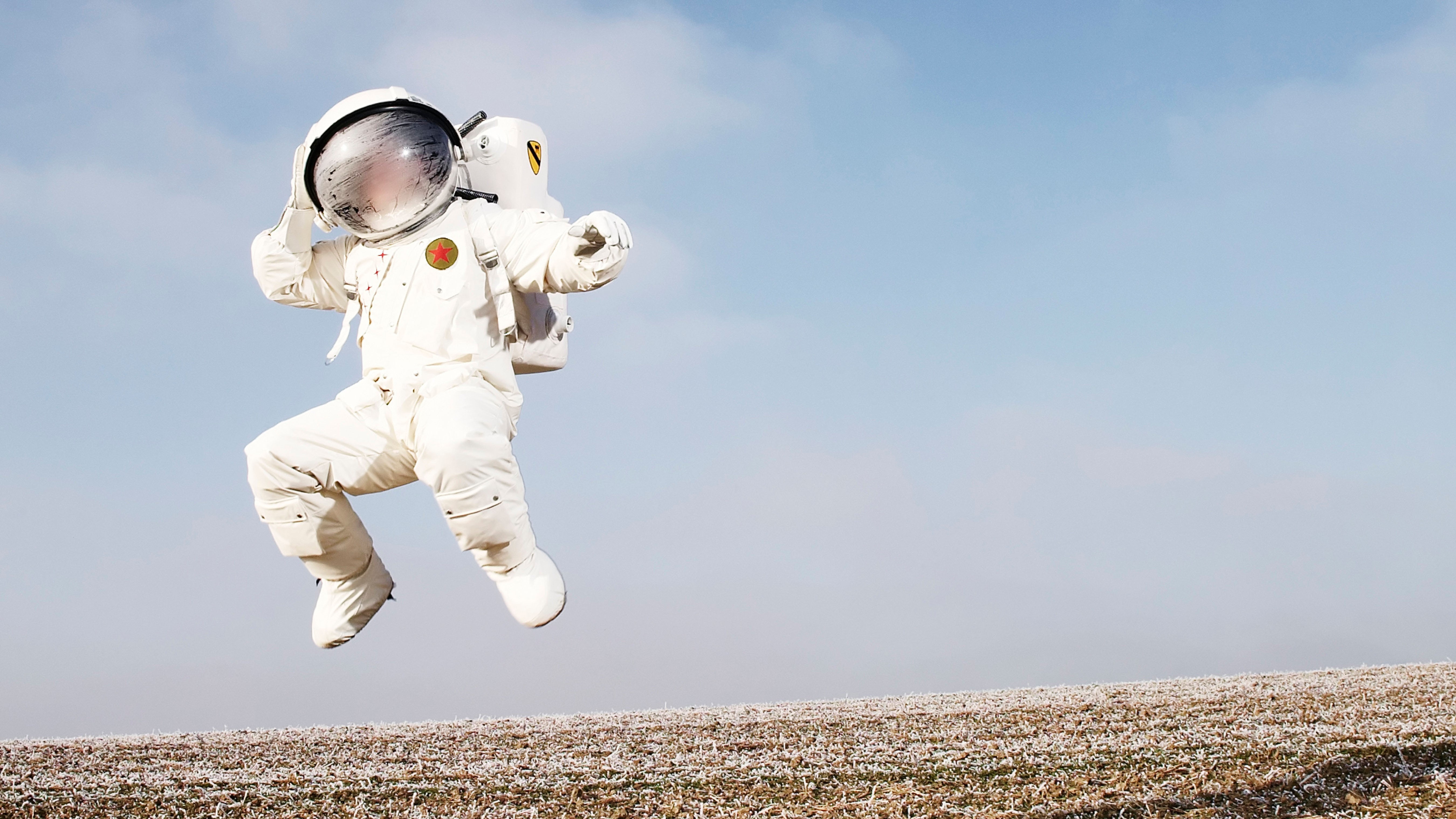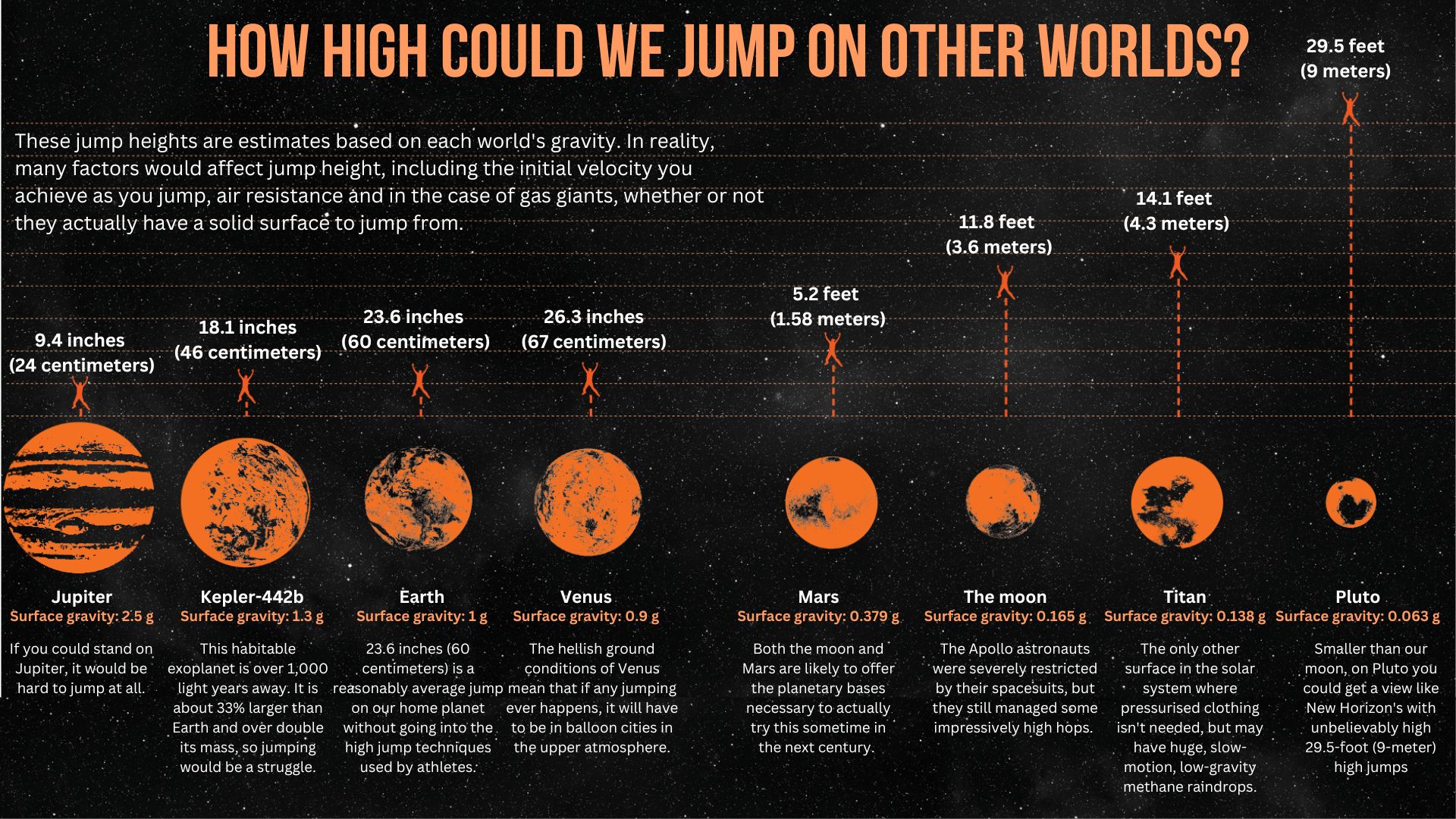
Ever wondered how high you could jump on another world?
When watching footage of the Apollo astronauts exploring the lunar surface, possibly the most striking thing is how they move in the lower lunar gravity. We're quite used to seeing people working in microgravity conditions, whether on the International Space Station (ISS) or experimental airplanes, but only 12 people have ever properly felt that curious low gravity of the moon.
Gravity is the force that occurs between any objects with mass. The moon has one-sixth the gravity of Earth because it has only one-sixth the mass of our planet. With less gravity, we get a combination of effects. Friction between surfaces, like between your shoes and the ground, depends on the force pushing the surfaces together, so less gravity means slippery shoes. This tendency to slip, and the physical restrictions of spacesuits, led the Apollo astronauts to develop their characteristic skip, which showed off the low gravity by how high they were skipping.
Everyone jumps differently, of course, but the average jump height on Earth is around 23.6 inches (60 centimeters) without getting into high jump techniques. So, given a suitable lunar base with enough room, how high could you jump on the moon?
Related: Sounds in space: What noises do planets make?
Leap height depends on how fast your body can push you upwards, and for the same set of legs on different planets, that depends on how strong gravity is.
On the moon, you'd be able to jump six times higher than you can right now — if you can manage 23.6 inches (60 centimeters) on Earth, then you could clear over 9.8 feet (three meters) on the moon, smashing the current world high jump record.
The next likely destination for humans is Mars. The Red Planet is also smaller than Earth, with one-third of the gravity, so you would be able to jump nearly three times as high, which is nearly the height of a standard door.

Within our solar system, the most Earthlike gravity should be Venus, with a surface gravity 90 percent that of Earth's, allowing you to jump 26.3 inches (67 cm), but we're unlikely to ever build a base or spacesuit that could allow us to stand on the surface of Venus due to the 752 degree Fahrenheit (400 degree Celsius) temperature and atmospheric pressure 92 times that on our planet. If we do reach Venus, you'll have to do your jumping in surprisingly feasible balloon-supported bases floating 31 miles (50 kilometers) above the surface.
Even though it's made up of gas, Jupiter has a much higher mass than Earth. But the absence of a ground surface on gas giants such as Jupiter and Saturn means gravity varies greatly throughout the planet. The mass of Jupiter is 318 times that of Earth's, suggesting that if you did manage to find a floor you would probably be squashed flat due to atmospheric pressure.
This article was originally published in our sister magazine, All About Space, issue 140.







